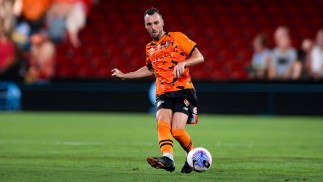German, Albanian, Bahraini, Spanish… The cultural mix of Australian football has certainly changed over the years.
A bit like the rich tapestry that makes up multicultural Australia, the Hyundai A-League has seen players from an enormous number of nationalities take the stage since 2005.
When Sydney FC-s Finnish forward Juno Mikela made his first appearance for the season recently, Finland became the 27th nationality represented in the 2011/12 A-League season – this is the highest number of different nationalities ever to have played in a national league season in Australia.
And while the number of nationalities represented at national league level in Australia has generally increased over time, the distribution of these “foreign” players – including players who developed overseas and later became naturalised Australians – has changed dramatically.
In 1977, players from around 20 different countries took part in the first season of the National Soccer League (NSL). Of those not raised in Australia, just over 70 per cent were from the United Kingdom – almost half from Scotland and half from England.
Although the actual number of foreign players in the NSL decreased substantially over the next 10 years, in 1987 still more than 60 per cent of these players were raised in the UK – around 30 per cent each from Scotland and England.
However by 1997, the English represented less than 10 per cent of foreign players in the NSL, and the Scots had reduced to less than 5 per cent.
These low percentages for UK-raised players has remained, through to the last year of the NSL (2004), and since the start of the A-League in 2005.
But while the proportions of UK born and bred players in the Australian national league has declined substantially since 1977, the range of other nationalities has widened considerably.
To analyse the spread of national league players over the years, let-s consider how FIFA regionalises the globe into six confederations: Asia, Oceania, Europe, Africa, South America, and the remainder of the Americas (Other America).
The foreign contingent of the 1977 NSL season was almost entirely from Europe, with a few more from South America.
In addition to the large numbers of Scots and English mentioned earlier, around fifteen 1977 NSL players were from the former Yugoslav republics, eight grew up in Argentina, and there were a few Greeks, Brazilians and Irish.
Africans like Lopez Manecas (Angola), Geoff Ontong and Les Hucker (South Africa), and Oceanian players Keni Kawaleva (Fiji) and Ian Park (New Zealand) were rare, while no Asian players (apart from Australians) and no known Other Americans appeared in 1977.
The first known Asian player to play for an NSL club was Iranian Kharim Ghiassi, who joined Sydney Olympic in 1979, although the Reis brothers Paul and Alan (Canberra City 1978 and 1979) had strong Hong Kong connections. Iranian Hussein Housseini also played for Sydney Olympic in 1981.
In 1979 Gerry Gomez became the first player from Other America to join an NSL club, moving from his native Costa Rica to Australian super club Sydney City aged 17. It wasn-t until 1991/92 when we saw the next Other American NSL player, when Canadian Robert Csabai played briefly with South Melbourne.
When the A-League kicked-off in 2005, players from all six FIFA confederations were represented.
Although Europe still provided the bulk of Hyundai A-League players who weren-t raised in Australia, there were significant numbers from Asia (Chinese, Korean, Japanese), Oceania (New Zealander, Solomon Islander) and even an Other American (Dwight Yorke from Trinidad and Tobago) who took part in the first A-League season.
Foreign players came from 18 different countries to play in the first A-League season 2005/06.
By the 2008/09 season this number declined a little (15), but with an expansion in the number of A-League clubs in 2009/10 came an increased number of source countries of foreign players (24), rising to 27 in both 2010/11 and 2011/12 so far.
The spread of source countries of our foreign players is remarkable, and new countries were still being added to the list in 2011/12, with Albanian Besart Berisha (Brisbane Roar), Bahraini Mohamed Adnan (Brisbane Roar) and Spaniard Dani Sanchez (Wellington Phoenix) the first players from those countries to appear at national league level in Australia.
This wide-ranging international flavour is just another aspect that makes the Hyundai A-League such a spicy spectacle.
Follow Andrew Howe-s Aussie football stats updates on Twitter @AndyHowe_statto



